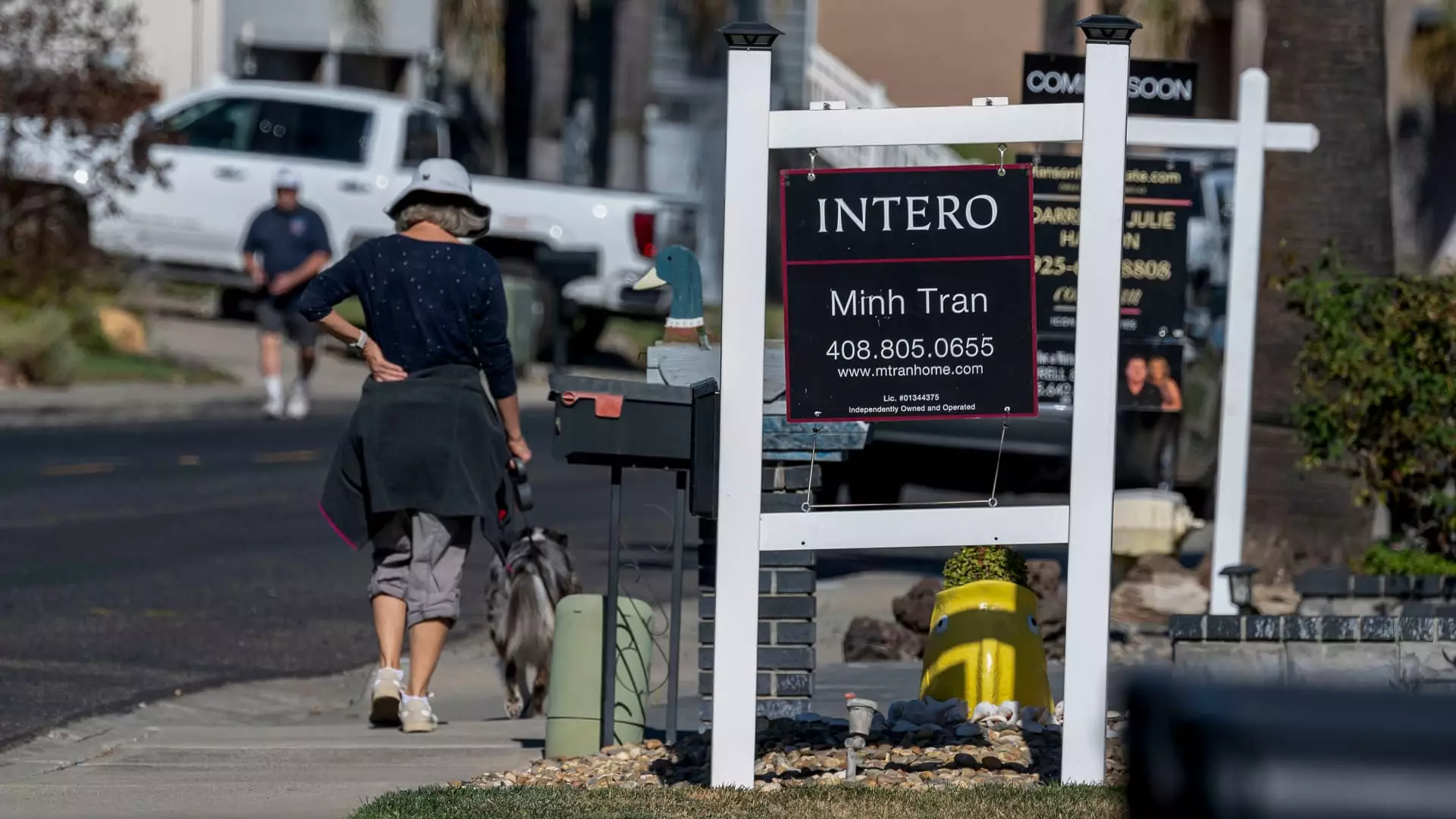In a notable development, mortgage rates have seen an upward trend for four consecutive weeks, culminating in a sharp decline in mortgage demand. According to recent data from the Mortgage Bankers Association, total mortgage application volume dropped by 3.7% compared to the prior week. This decline comes despite seasonal adjustments, including considerations for the New Year’s holiday. The average contract interest rate for 30-year fixed-rate mortgages—specifically for conforming loans with balances of $766,550 or less—rose to 6.99%, up from the previous rate of 6.97%. This figure represents the highest recorded rate since July 2024, indicating a significant shift in the borrowing landscape.
While there was a modest increase of 2% in home loan refinance applications week-over-week, these figures remain starkly lower—by about 6%—when assessed against the same time last year. This increase, albeit small, illustrates the volatility in the refinancing sector. It’s crucial to note that today’s refinancing rates are 18 basis points higher than year-ago levels, with percentages reflecting fluctuations skewed by a currently low volume of refinances. Meanwhile, applications for purchasing homes fell by 7% during the week and were down 15% from the same week last year. This decline in purchase applications underscores the impact of elevated mortgage rates and home prices, which together are clearly deterring potential buyers.
Interestingly, there is a greater supply of homes available for sale now compared to January of last year. However, the combination of rising rates and increased home prices is curbing buyer enthusiasm. Joel Kan, the vice president and deputy chief economist at MBA, pointed out that both conventional and government loan applications are experiencing significant declines. The current pace of mortgage applications is now at its slowest level since February 2024, raising concerns about the sluggishness of the housing market in the face of economic pressures.
As we move further into the year, the trajectory of mortgage rates appears uncertain. A separate survey from Mortgage News Daily indicated a further increase, with the 30-year fixed average hitting 7.14% as of Tuesday. The driving factor behind this uptrend in rates is closely linked to various economic data, which could either reinforce the rising trend or signal a potential shift in the opposite direction. The upcoming economic indicators will be crucial to watch, as they hold the potential to shape borrower expectations and market dynamics in the months ahead.
The combination of rising mortgage rates, fluctuating refinancing activity, and uncertain economic indicators calls for careful consideration among prospective buyers and homeowners. As the market continues to evolve, stakeholders in the mortgage industry will need to navigate this complex environment thoughtfully to make informed decisions.

